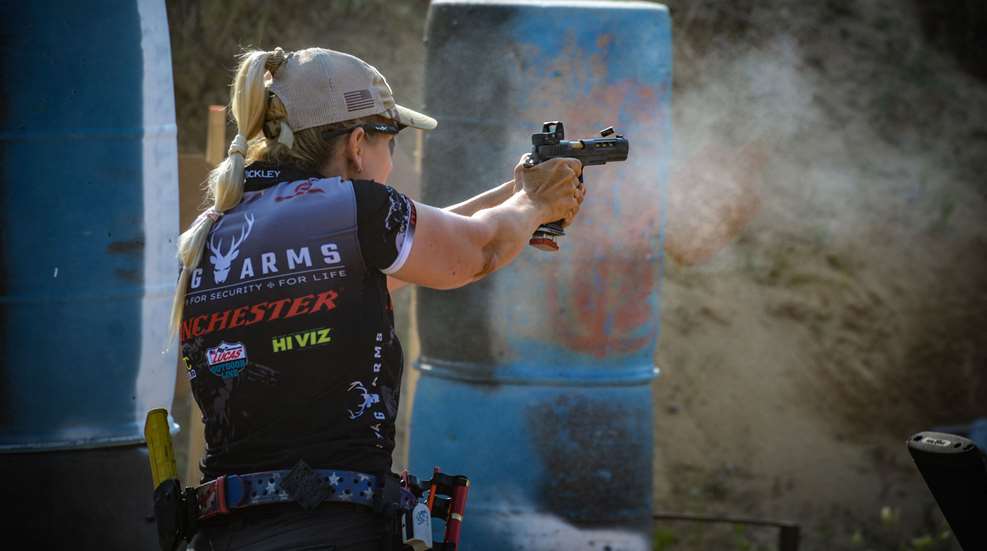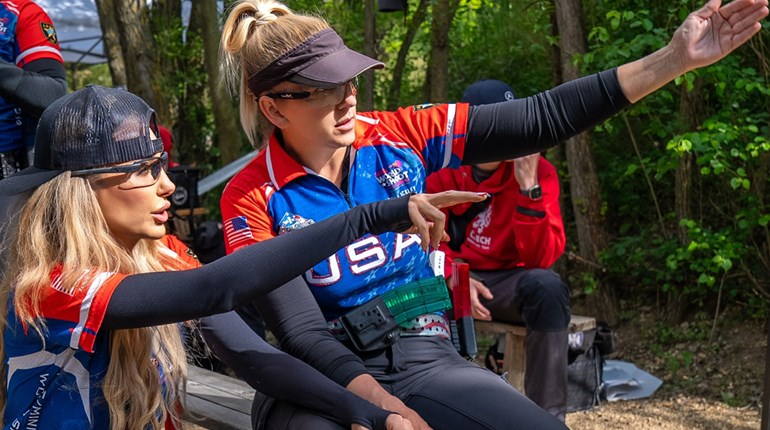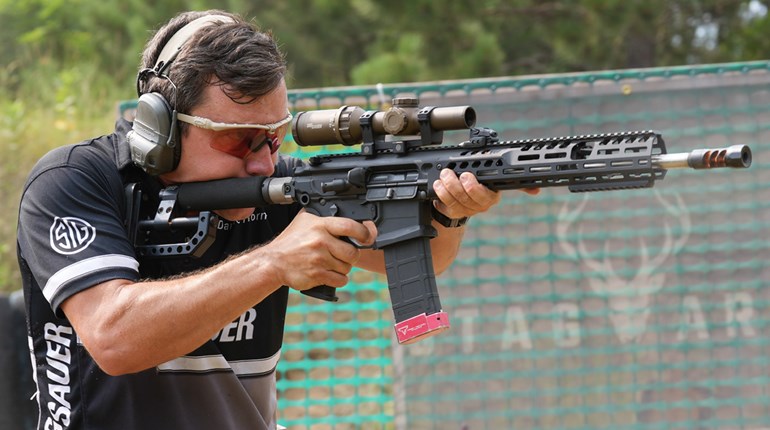
In order to shoot a firearm well, you need to hold it. This is called “grip.” Here’s a look at common fundamentals of grip, no matter the firearm platform.

Hold Still!
First, it’s important to address, minimize and remove the variables introduced by human error that affect how you shoot a firearm.
A gun will be completely still if you shoot it from a rest, like a Ransom Rest, which is commonly used for testing specific ammunition loads in a firearm. The rest keeps the gun so still it removes the variables of human error. There are also specialty fixtures or more portable devices, like the tripods used by PRS shooters, or a rest similar to what F-Class competitors use. The universal constant across these methods is that the firearm is held as still as possible and as many variables that can be removed, are removed so that consistent and repeatable results can be attained.
When you hold a gun with just your hands, or hands and shoulder, as you would with a rifle or shotgun, you want to do everything to make the process as repeatable as possible. That starts with not letting the gun move around while you hold it.

Be Consistent
Consistency is the next key to gripping a firearm well. We grip, stand and line up the sights, place the sights on target, and pull the trigger the same way each time we shoot—all for consistency.
Be Strong
The fact that shooting a firearm produces recoil means that to stay consistent, we must control it. A physical rest (like the rests discussed above), or our bodies, can be moved by recoil. If we allow movement from shot-to-shot, we lose consistency. But strong grip doesn’t mean gorilla-level strength!
A subtle facet of strong grip involves surface tension and pliable materials. For example, if we were to lock a pistol with metal grips into a fixture that was not made for it, the abrupt action of recoil would likely move the firearm in the fixture. Or if we were to lock rubber-coated grips into a fixture contoured specifically to fit them, the firearm could be basically immovable. Your hands can be thought of the same way.
Try this with a friend: Stiffen your hands and try to make them “hard as a rock,” and then have your friend put their hand inside yours (like a handshake with two hands). Ask them to abruptly yank their hand away and out of your grip. Next, do this same thing, but keep your hands more pliable—grip firmly, but don’t make your hands “hard.” Experiencing this helps a person understand that we don’t grip a firearm like we’re trying to break it; we grip it firmly and allow as much surface tension to be built as possible.
Some people prefer silicon carbide, skateboard grip tape, while others prefer stippling as a means of increasing surface tension—all are great tools! They facilitate more surface tension by creating more and smaller interfaces between the person’s body and the firearm. Compare that to a slick-feeling, hard polymer pistol grip on a hot day where your hands might feel sweaty, and you might have knees of spaghetti at the prospect of holding that gun tightly!
Here's how to apply these concepts to gripping your firearm:
Holding still can be looked at in two ways: holding yourself still; and holding the firearm still. Holding the firearm still without being still yourself is tricky. So, start with getting yourself still.
Holding Yourself Still
Establish a proper stance and find your natural point of aim, or index, on the target. Sometimes determining how far out you place your support hand on a rifle or shotgun can be made simpler by taking aim at the target. How you grip can be influenced by whether you set your body up properly. As a beginner, establish what your target is, face it and get an understanding for where you will be shooting and where your body needs to be so that you are able to grip the firearm properly and consistently.
You will see experienced competitive shooters hold their empty shotgun and set up for a clay target—they are thinking about their swing and where they want to engage the clay. Pistol shooters set up by considering what target they draw to and what direction they will shoot. Rifle shooters will often dry fire and check their natural point of aim. So holding still while shooting requires that you set up properly before you shoot.
The goal is to hold the firearm without you or it moving around. Even pistol shooters transitioning from target-to-target strive for few variables—they eliminate hunching shoulders, dropping their torso lower or tipping their body as they reload.

Holding the Firearm Still
This is accomplished by building your grip properly and maintaining the necessary tensions. Whether it’s pistol, rifle or shotgun, gripping the gun firmly as required for each platform will help you to hold the gun still (or swing, in the case of a shotgun).
Consistency
Every time you grip your firearm, place your hands in the same place. You can look at pictures of exactly how to do this. What matters is that you do it correctly and consistently each time you shoot. Establish a solid cheek weld on the stock of a rifle or shotgun. Place the buttstock in the same place in your shoulder. Pull the stock back into your body with your hands. For pistols, we don’t have other physical markers (like shoulder pocket or cheek weld), but we build our grip with our hands properly placed and bring it up to eye level the same way each time.
Be Strong
When you think about gripping a gun with strength, think about not being a limp noodle. Grip the gun firmly and hold your body firmly against recoil.
For some new firearm owners, strength holding a firearm can require some training. That’s OK; it’s a great excuse to dry fire and hit the gym. Pistols especially can trouble some people, but there are specific exercises to help you build strength. Don’t feel like you cannot use a firearm well if it’s heavy or it feels awkward. Strength and skill come with work. But on the opposite end of the spectrum, don’t expect to wield a heavy rifle or shotgun the same as someone bigger and stronger. Perhaps opt for buying your own gun suited for you!
Working to understand grip, with the knowledge that if we set up to properly grip and hold firearms, we can wield almost any with skill. So do some reading and dry fire, hit the range and gym if needed, but get out there!













































